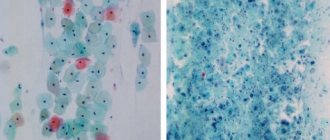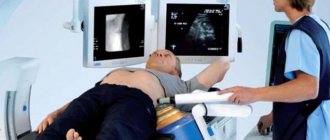Muscle atrophy leads to loss of volume and number of fibers in striated muscles. This pathology is caused by many different reasons. It develops from prolonged restriction of physical activity. Muscle atrophy is caused by various diseases or injuries.
Some types of atrophy are caused by genetic problems. If these disorders are not consulted and treated, the patient may lose the ability to move. Therefore, if you feel weakness and soreness in your muscles, you should visit a doctor as soon as possible.
Description
Muscular atrophy is a disorder of muscle tissue trophism. It is accompanied by gradual thinning and then degeneration of the fibers. Over time, their contractility decreases. Muscles decrease in volume. Their fibers become thinner until they disappear completely.
Muscle tissue is replaced by connective tissue fibers. They are unable to contract. The patient's motor function suffers. His muscle strength and tone decrease. This leads to loss of motor activity or its sharp decrease. There are simple and degenerative types of the disorder.
Degenerative muscle atrophy is a leading sign of a group of neuromuscular hereditary pathologies. Simple muscle atrophy develops due to the increased sensitivity of muscle fibers to damaging factors of various types.
This disorder can be a syndrome associated with various diseases, intoxications, and injuries. Muscle atrophy occurs due to exhaustion, tissue hypoxia, nerve damage, microcirculation disorders, intoxication, compression by tumors, and metabolic disorders.
Types of SMA
There are several types of muscle atrophy.
- SMA type 1, or Werdnig-Hoffman disease. It appears suddenly in the first six months of life and progresses rapidly. Children with this type of disease often do not live beyond 2 years of age.
- SMA type 2, Dubowitz disease. The first symptoms appear between 6 months and 1.5 years of life. Children with this form will never be able to walk or stand. The disease progresses in different ways: some children gradually weaken, while in others, thanks to careful monitoring and care, deterioration does not occur for a long time. Most people with this type of amyotrophy live into adulthood.
- SMA type 3, or Kugelberg-Welander disease (syndrome). Juvenile form, symptoms appear at the age of over one year. Patients will be able to walk without support until a certain point. Life expectancy approaches or even reaches the average.
- SMA 4, adult form. The first symptoms usually appear only in the fourth decade of life. The muscles most affected are those located far from the center of the body—the proximal muscles of the limbs. This type of disease does not affect life expectancy.
Causes
Muscle atrophy develops for the following reasons:
- hereditary predisposition;
- mechanical injuries;
- hard physical labor;
- infections;
- myopathy;
- diabetes;
- malignant neoplasms;
- aging of the body;
- paralysis due to damage to peripheral nerves;
- starvation;
- intoxication;
- metabolic disorder;
- pathological process in the superior parietal lobe;
- prolonged immobility;
- spinal cord damage;
- thrombosis of large vessels;
- birth injury;
- neurological disorders;
- polio;
- myositis;
- pathology of the pancreas.
In case of a back injury with damage to the spinal cord, muscle dystrophy is observed in the area of innervation of the damaged segments.
Symptoms
With the initial manifestations of muscle atrophy, the patient quickly gets tired. There is a significant decrease in muscle tone and twitching of the limbs is noticeable. With atrophy of infectious or traumatic origin, damage to motor neurons occurs.
It leads to movement disorders that vary in severity from slight limitation of movements in the upper and lower extremities to paralysis. The patient develops weakness in the legs.
It is difficult for him to move on if he is forced to stop. The patient notes a feeling of heaviness in the legs. His movements are difficult, numbness appears, and his gait is disturbed. Then atrophy of the muscles of the gluteal region occurs.
The patient develops a waddling gait. Numbness in the buttock area is detected. Pallor of the skin is characteristic. Muscle atrophy in the upper extremities is expressed in limited movement.
The patient is bothered by tingling and numbness in the hands, decreased tactile sensitivity. Mechanical impact on tissue causes severe discomfort. The patient's tissue trophism is disrupted, which leads to blue discoloration of the skin.
Muscular dystrophy, or myodystrophy
4280 21 September
IMPORTANT!
The information in this section cannot be used for self-diagnosis and self-treatment.
In case of pain or other exacerbation of the disease, diagnostic tests should be prescribed only by the attending physician. To make a diagnosis and properly prescribe treatment, you should contact your doctor. Muscular dystrophy: causes, symptoms, diagnosis and treatment methods.
Definition
Muscular dystrophies are a large group of inherited diseases that are characterized by progressive weakness and degeneration of skeletal muscles, that is, loss of muscle mass. The most common muscular dystrophies include Landouzy-Dejerine muscular dystrophy (scapulohumeral-facial myopathy), Duchenne muscular dystrophy and Becker dystrophy. This group also includes Emery-Dreyfus dystrophy, Erb-Roth muscular dystrophy and others.
Duchenne muscular dystrophy affects mainly boys, and the prevalence of this disease is 3.3 per 100,000 population; 1 in 3,500 newborn boys suffers from this pathology. This type of dystrophy is often classified into the same group with Becker muscular dystrophy (incidence rate 1 in 20,000 newborns). Duchenne and Becker muscular dystrophies are inherited in an X-linked recessive manner. This means that the damage is located on the X-sex chromosome and is transmitted from mother to son, and daughters are carriers and, as a rule, do not get sick themselves.
Landouzy-Dejerine myopathy (humeral-scapular-facial myopathy) occurs with a frequency of 0.9-2 per 100,000 population. The disease is inherited in an autosomal dominant, autosomal recessive (the rarest) or X-linked manner. For an autosomal dominant type of inheritance, one copy of the defective gene from one of the parents is sufficient.
The frequency of development of Emery-Dreyfus muscular dystrophy is not precisely known; 7 genetic forms have been described, but the frequency has been established for only one of them - the X-linked recessive form, it is 1 in 100,000.
The incidence of Erb-Roth muscular dystrophy ranges from 1.5 to 2.5 cases per 100 thousand population. Both boys and girls are susceptible to this type of muscular dystrophy. Erb-Roth muscular dystrophy is inherited in an autosomal recessive manner, that is, the pathology manifests itself if a child receives an abnormal gene from each parent. Each parent can be a carrier of the defective gene, but usually remains healthy. About 30% of gene mutations occur de novo
, that is, they are not inherited, but appear “out of nowhere” and can then be passed on to offspring.
Causes of muscular dystrophy
The cause of the development of various muscular dystrophies is pathologies in genes - about 25 genes are known to be responsible for the development of congenital muscular dystrophies.
In Duchenne muscular dystrophy, due to a mutation, the production of the protein dystrophin, which ensures the strength, stability and functionality of muscle fibers, is disrupted, and its deficiency leads to damage to the membranes of muscle cells (myocytes).
Classification of diseases
Muscular dystrophies can be classified depending on which protein has been mutated. In addition, they are divided according to the type of inheritance: autosomal dominant, autosomal recessive, X-linked.
Symptoms of muscular dystrophy
Duchenne muscular dystrophy usually manifests itself between 2 and 3 years of age. Pathological processes first occur in the leg muscles, children can walk on their toes, waddle, and there is an excessive forward arching of the spine - lordosis. It becomes difficult for children to run, jump, climb stairs, and get up from the floor. For different types of muscular dystrophies, Govers' symptom is characteristic - due to weakness of the muscles of the thighs and pelvic girdle, the patient, in order to rise from a squatting position, has to lean his hands on the floor, then rise, leaning his hands on his knees. Muscle weakness progresses, children develop scoliosis and flexion contractures - when the child cannot fully straighten the limb. Children often fall, so there is a high risk of broken arms or legs. Individual muscle groups may be replaced by fatty or fibrous tissue, resulting in muscle pseudohypertrophy, especially noticeable in the ankles. If the myocardium (heart muscle) suffers, then there is a predisposition to the development of rhythm and conduction disturbances of the heart, as well as dilated cardiomyopathy (a condition where the chambers of the heart are enlarged and the walls are thinned), leading to heart failure.
In 20-30% of cases with Duchenne muscular dystrophy, intellectual and memory impairments appear.
By age 12, most children are forced to use a wheelchair. At the age of 15-20 years, patients already require respiratory support; patients with Duchenne muscular dystrophy die from respiratory or cardiac complications at the age of 12-25 years.
Symptoms of Becker muscular dystrophy usually appear later, and the disease itself is a little easier.
Becker's muscular dystrophy debuts at 10-20 years of age and progresses slowly; the ability to walk independently is maintained for 15-20 years from the onset of the disease. The symptoms are similar to Duchenne muscular dystrophy, weakness extends to the muscles of the hips, pelvis, shoulders, patients walk on their toes or waddle, and hypertrophy of the leg muscles is also observed.
The development of the disease is very individual; some patients require a wheelchair by the age of 30, while others manage with a cane for a long time.
Patients with Becker muscular dystrophy also experience damage to the heart muscle with the development of heart failure.
The first signs of Landouzy-Dejerine muscular dystrophy appear mainly at the age of 10-20 years. First, atrophy and muscle weakness are observed in the shoulder girdle with damage to the muscles of the shoulder blades and shoulders, then spread to the face with characteristic asymmetry. The initial manifestations are difficulty raising the arms above the head, protruding “wing-shaped” shoulder blades and scoliosis. As the disease progresses, the facial muscles suffer, and the patient cannot close his eyes tightly and purse his lips. Later, facial expressions become poor and speech is unintelligible. Characteristic symptoms are a transverse smile (“Gioconda’s smile”), everted lips (“tapir lips”), and a “polished” forehead. Sometimes atrophy extends to the leg muscles. Other clinical signs of Landouzy-Dejerine muscular dystrophy may include retinal vascular abnormalities, retinal edema and detachment, and hearing loss.
Emery-Dreyfus muscular dystrophy is characterized by contractures of the elbow and ankle joints that occur in early childhood (shortening of the Achilles tendons leads to the fact that the child cannot sit on his heels), stiffness of the spine, slowly progressive weakness of the scapulohumeral and pelvic-peroneal muscles (hip muscles). and lower legs), as well as severe cardiomyopathy with rhythm and conduction disturbances. The severity of heart disease often determines the prognosis of the disease due to the high likelihood of sudden cardiac death or the development of progressive heart failure.
Erb-Roth muscular dystrophy is accompanied by weakness of the muscles of the lumbar region and limbs. The first signs appear at the age of 10-20 years: difficulties in running, fast walking, jumping, Govers' symptom is characteristic. Over time, posture and gait begin to change, and the tone of the muscles of the shoulder girdle decreases. As the disease progresses, the patient may completely lose the ability to walk. Total wasting of the trunk muscles leads to the fact that the patient’s shoulder blades begin to protrude, the waist becomes very thin, and the lumbar lordosis increases. A characteristic symptom of loose shoulder girdles is that when you try to lift the patient, holding his armpits, the patient’s shoulders move freely upward and the head seems to “fall” between them.
Diagnosis of muscular dystrophy
The doctor can make a preliminary diagnosis during the examination, observing the child’s attempts to run, jump, climb stairs, and get up from the floor.
To confirm the diagnosis, the following is carried out:
- Blood test for serum creatine kinase, AST, ALT.
Diagnostics
If signs of muscle atrophy are detected, you should consult a therapist, traumatologist, neurologist or orthopedist. To clarify the diagnosis, the following studies are performed:
- general clinical blood test;
- electroneuromyography
- electromyography;
- muscle tissue biopsy;
- blood biochemistry;
- genetic examination.
To identify the causes of muscle atrophy, it is necessary to diagnose the condition of the pancreas, thyroid gland, and liver.
Muscle atrophy due to physical inactivity
Very often, muscle atrophy appears in people who remain without physical activity for a long time. This condition can occur involuntarily after a fracture of a limb, after surgery, after a stroke, or against the background of various somatic diseases. An immobilized position leads to the fact that the cells are poorly supplied with blood, hypoxia of the brain and other important organs (in particular, the heart) occurs, and disruption of the hormonal and nervous systems occurs. Thus, the muscles stop transmitting signals to the brain and gradually lose their functionality.
Following muscle atrophy, the body will continue to deteriorate further: irreversible changes in the cardiovascular system may occur. It is very important to prevent a state of physical inactivity in children, because they are just developing all the vital systems and the musculoskeletal system. Delays in motor development and coordination are fraught with serious neurological disorders.
Treatment
Therapy for muscle atrophy is determined by the degree of loss of this tissue, as well as the nature of the underlying disease. This slows down the progression of muscle fiber breakdown. Exercise therapy is prescribed as additional measures.
The complex consists of stretches, as well as exercises to prevent the development of limb immobility. They increase muscle strength, improve blood circulation, and reduce spasticity.
The method of functional electrical stimulation is actively used in treatment. Here, electrical impulses are used to stimulate muscles. Electrodes are applied to the affected areas. The current, passing through the tissues, causes muscle contraction.
Specific drug therapy will depend on the underlying disease. To do this, identify the cause of muscle atrophy as early as possible and begin treatment.
Helping organizations
The SMA Families Charitable Foundation is the only organization in Russia that specializes in helping families dealing with spinal muscular atrophy. It provides charitable, informational and psychological support to families, and advises specialists on the disease and methods of working with patients with SMA.
Hospice Assistance Fund "Vera". Charitable and advisory assistance to families with terminally ill children and terminally ill adults.
CSCH No. 1 Department of palliative care for children, Yekaterinburg, Sverdlovsk region. Medical, informational, social and psychological assistance is provided to families raising a disabled child with a palliative condition.
“Research Clinical Institute of Pediatrics named after Academician Yu.E. Veltishchev" FSBEI AT RNRMU named after N.I. Pirogov. The institute is located in Moscow. Residents throughout Russia can seek medical help for children with SMA and other neuromuscular diseases.
Clinic "Chaika". Consultations with pulmonologist Vasily Andreevich Shtabnitsky for children and adults with SMA.
Children's hospice “House with a Lighthouse” (Moscow, near Moscow region). Medical, psychological, legal, social, and charitable assistance to families with terminally ill children and young adults (up to 25 years of age).
Marfo-Mariinsky Medical Center (Moscow). Medical, psychological, legal assistance, nanny assistance, events, spiritual support, charitable assistance to families with terminally ill children.
Help for bedridden patients with SMA continued the topic, read about the main problems and complications in bedridden patients with spinal muscular atrophy, as well as solving these problems and planning offspring after a child with SMA was born in the family.
More detailed information can be found on the website of the charitable foundation “SMA Families” and their special project about living with spinal muscular atrophy. The special project is intended for those who have been diagnosed with SMA and would like to know all the most important things about this disease: which specialists and where to go, how to care, what to watch for, what to remember, what therapy exists today.
You may also be interested in learning about other genetic diseases:
Duchenne muscular dystrophy: what is it? How often and why does this disease occur, why pediatricians often confuse it with hepatitis, what to do if your child is diagnosed with this. Doctor of Medical Sciences, president of the Gordey charity foundation and grandmother of Gordey, a boy diagnosed with Duchenne muscular dystrophy, Tatyana Andreevna Gremyakova talks about what needs to be done to ensure that children with this diagnosis remain active for as long as possible and live a full life.
Cystic fibrosis: manifestations, diagnosis, treatment and helpWhat is cystic fibrosis, how is it diagnosed, how is it treated and what organizations help patients in Moscow and the regions
DNA tests for ALS: what are they and is it worth doing them? Candidate of Biological Sciences Fyodor Konovalov talks about modern genetic tests for mutations in amyotrophic lateral sclerosis, their goals and interpretation of results











